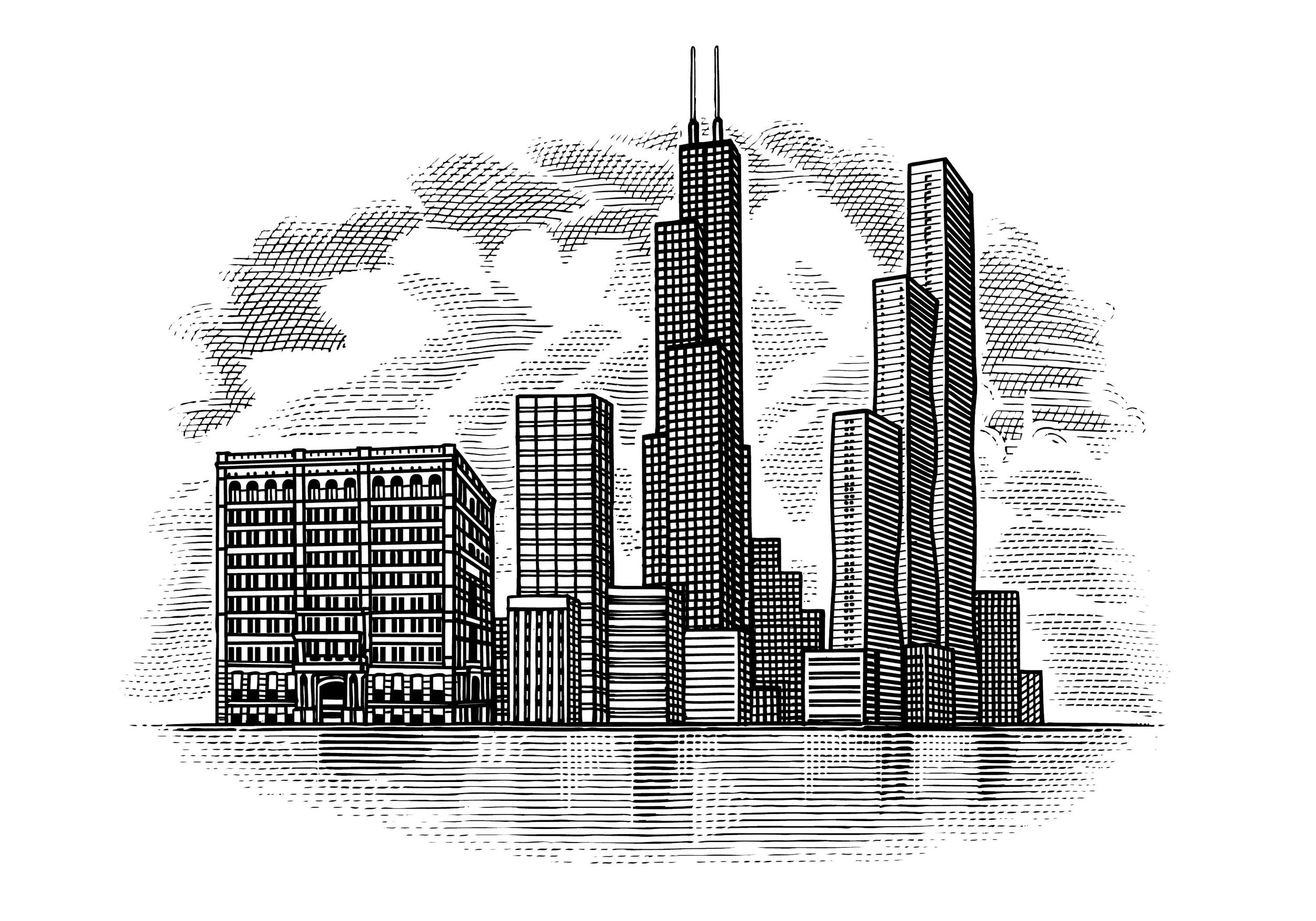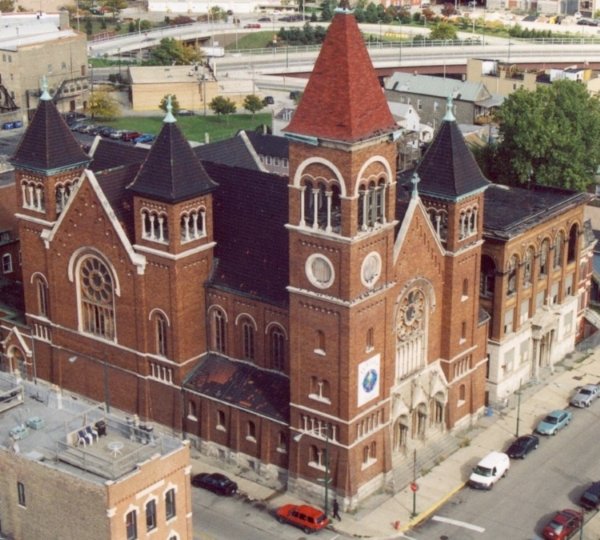Noble Square
Image courtesy of www.saintbonifaceinfo.com
Estimated reading time: 6 minutes (1229 words)
On the near-west side of Chicago, just next to Interstate 90, sits Noble Square. As its name implies, Noble Square is a small, four sided neighborhood truncated by the highway passing through its eastern flank.
Noble Square contains two Catholic parishes: Holy Trinity and St. Boniface. Being in the heart of Polonia, or Polish Chicago’s historical center of gravity, Holy Trinity was (and is) a Polish parish that split from the nearby St. Stanislaus Kostka in 1872. This split set off a feud between the parishes that resulted in Holy Trinity being placed under interdiction and eventually restored to communion after a visit from an Apostolic Delegate in 1893.
Just down the street is (or was) St. Boniface. Unlike Holy Trinity, St. Boniface was not a Polish parish but a German one. The parish itself was established in 1865 by German immigrants, but the final church structure — and the heart of Noble Square — was built between 1902 and 1904.
St. Boniface was designed by Henry J. Schlacks, a well-known, Chicago-born ecclesiastical architect of the early Twentieth Century. It sits on a corner lot and takes a Romanesque, Latin cross form with four bell towers, three rose windows, and a grand arched main entrance. The exterior is composed almost completely of brown brick with few flourishes.
Inside, the church contains 50 foot ceilings with a central transept that terminates in a nave with a wonderful marble backstop behind the altar. Murals and stained glass windows surround the interior perimeter. It is a stately building that makes its presence known through its sheer mass.
Because St. Boniface sits on the corner of Noble and Chestnut streets it also looks serenely over Eckhart Park, which one of the parish’s early pastors was integral in establishing. St. Boniface is unique because of its life cycle and architecture, but also in the way this history reflects the city and continues to reverberate thirty years after the parish’s closure.
As a work of sacred architecture, St. Boniface is not even the best building on its street; Holy Trinity is just one thousand five hundred feet north. But for its former parishioners and those who have become attached to it, St. Boniface is a local treasure.
The fact that it was designed in the Romanesque Revival style, as opposed to the Polish Cathedral style of Holy Trinity and several other nearby parishes, is significant. Romanesque Revival has its roots in Germany, and the architecture was in part introduced to the United States by German immigrants as they settled here in the mid 1800s, preciscely when the St. Boniface parish was established.
Although “simple” vis-a-vis other styles, Romanesque Revival is a well-developed architectural style in its own right. Bulky masonry, wide arches, and piercing towers all contribute to a Romanesque Revival building’s sense of place and permanence. These attributes naturally lend themselves to permanent, geographically significant structures such as churches. And as German immigrants flooded the United States and Chicago in the mid-nineteenth Century, Romanesque Revival was a familiar sight and a defining choice for Noble Square’s bedrock parish.
The “new” St. Boniface was dedicated in 1904, replacing a smaller building near the same site. The parish flourished for 80 years but beginning in the mid 1980s St. Boniface was faced with stagnation and contraction. The school, opened in 1896, closed in 1983, and the parish proper was soon to follow. On June 3rd, 1990 St. Boniface was officially closed by the Archdiocese of Chicago. Two days later would have been the parish’s 86th anniversary in the “new” building.
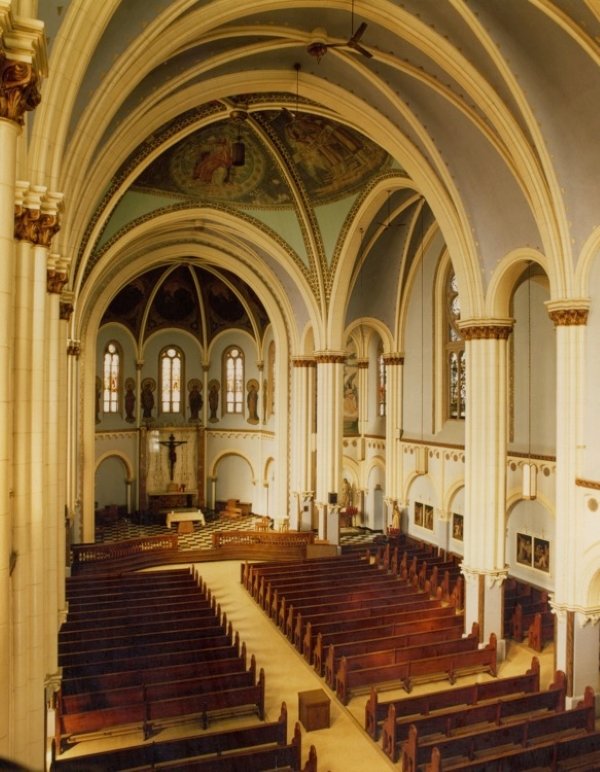
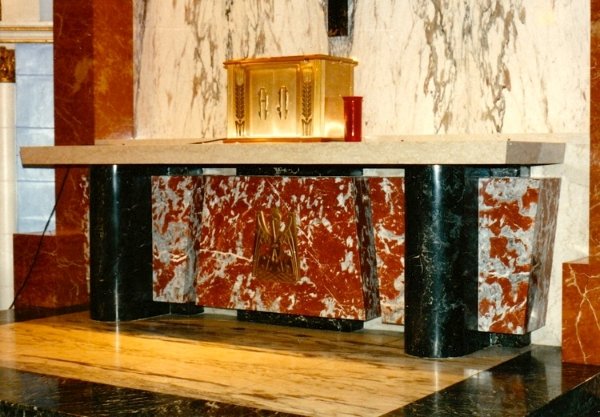

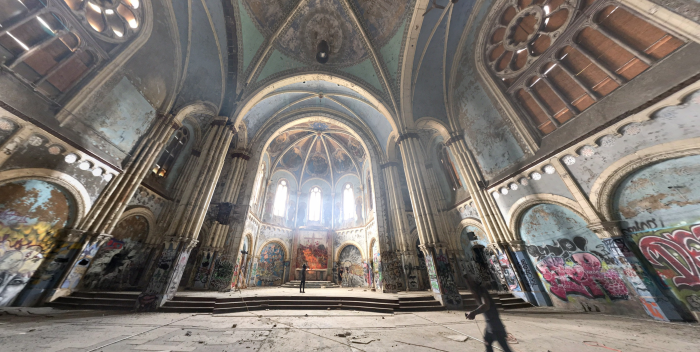
For a parish that closed thirty years ago, and was in decline much longer than that, why has the neighborhood stayed so loyal to its skeleton on the corner of Chestnut and Noble? It’s a simple structure in direct competition with other nearby parishes; it’s derelict; it’s not even really Catholic anymore. And yet for three decades neighborhood groups and the city have invested in preserving it, even after the Archdiocese washed its hands. Why?
The closing of St. Boniface created a scattering throughout the neighborhood. Not only was the parish a literal bedrock because of its physical property, it also served as a bedrock of the Noble Square community for more than a century. The parish’s size and relative longevity allowed multiple generations of families to experience the Catholic life cycle in one place. It allowed them to plant roots, and when the parish closed they held on closely to the physical remains of their spiritual home.
Then, after the installation of the highways in the 1950s and 1960s (during the era of Mayor Richard J. Daley, the hard-nosed Irish Catholic from the city’s South Side), the Noble Square neighborhood became somewhat of an enclave. The highways meant it was suddenly isolated from a significant part of the parishioner base. In a city defined as strongly by its neighborhoods as Chicago is, this had a significant negative impact.
Demographic changes, though not as drastic as elsewhere in the city, further eroded the support St. Boniface needed in order to survive. The parishioners who stayed put were, by extension, the most loyal and involved. By the time the parish closed for good, there were enough diehards left to fight for the building’s survival.
That fight did not come easy. St. Boniface’s afterlife has arguably been more eventful than its life as an active church. Almost immediately after its closure, neighborhood groups, preservationists, developers, the city of Chicago, and other denominations fought to restore and repurpose the church building.
First, neighbors and other interest groups fought with the Archdiocese. In 1999, ten years after the parish closed, the Archdiocese sought the first of two demolition permits for the property, simultaneously claiming it did not have the funds required for upkeep but that the property also could not be sold. Negotiations between the city, developers, and even a Coptic Church congregation continually hit dead ends, and in 2009 the Archdiocese submitted another demolition permit.
Despite the constant threat of demolition, in 2010 the St. Boniface property was acquired by the city in a land swap with the Archdiocese and was immediately leased out to a developer with the intent of converting the old church building to a senior living complex. That plan was abandoned a year later due to engineering issues, and more attempts by the developer to restart the project were met with significant financial issues.
By 2013, another developer with another senior living plan took over the property, but as was the case previously, the plan was derailed due to financing and a changing market. In 2016, another demolition permit was issued but rescinded when a development partnership acquired the property with a plan to build condominiums within the church structure. By late 2017 the development partnership dissolved but the church remained in one of the developer’s hands, who has retained ownership to the present.
Between 2017 and now, the development plan has stalled — again. St. Boniface is still abandoned and derelict. The most recent attempt is marketed as “Urban Sanctuary. Divine Living.” and is pre-selling condo units, mockups of which can be found on Zillow. According to the frequently updated St. Boniface community website, the new target completion date is next year. In the meantime, as it has for one hundred and twenty years, St. Boniface continues to stand guard over its corner.
